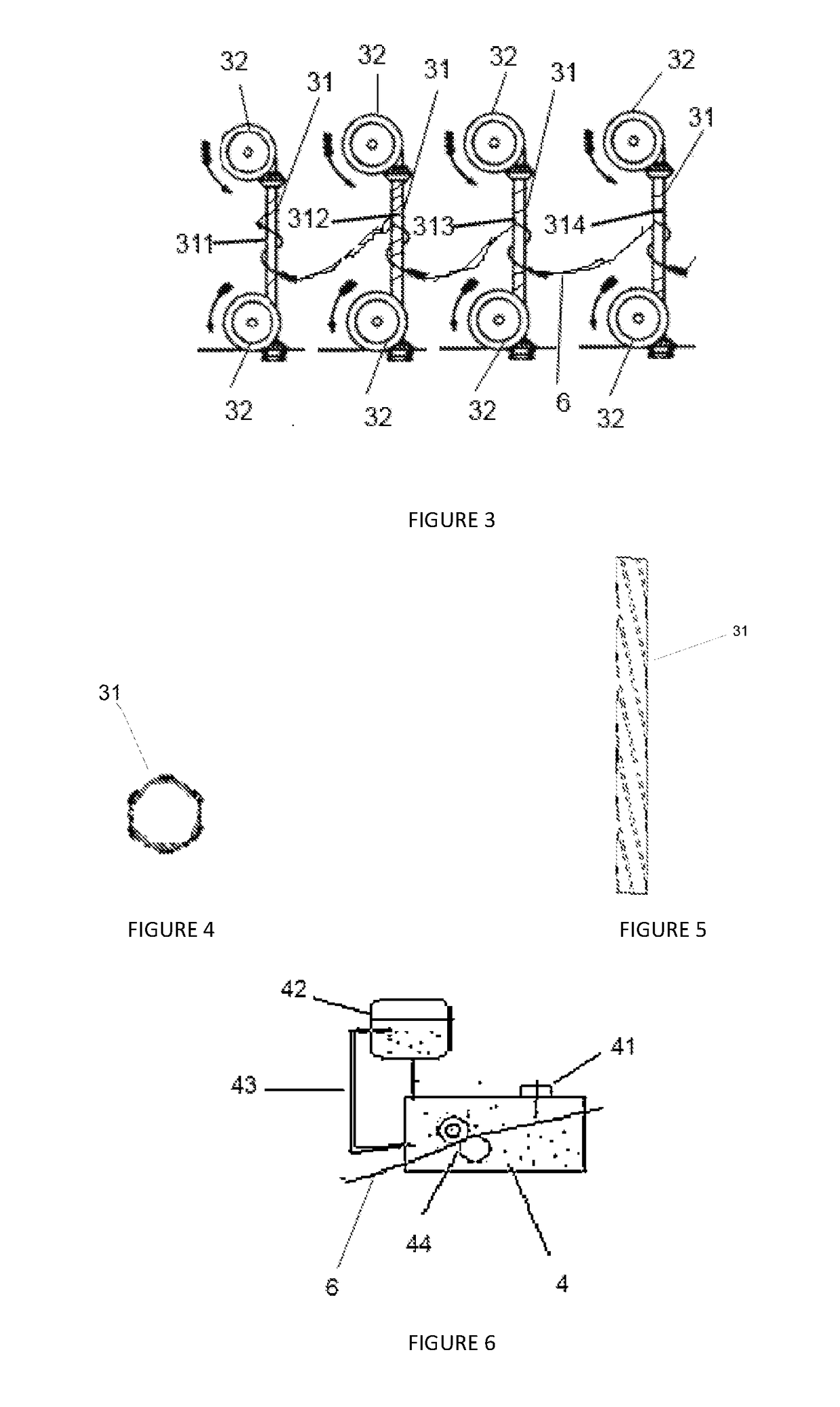Production of paper yarn from cellulose-containing plant species
a technology of cellulose-containing plant species and paper yarn, which is applied in the direction of yarn, textiles and paper, vegetable fibres from other vegetable matter, etc., can solve the problems of unacceptable environmental waste, need to be cleaned and put through a great deal of processes, and the application of this process was abandoned years ago, so as to reduce the time period
- Summary
- Abstract
- Description
- Claims
- Application Information
AI Technical Summary
Benefits of technology
Problems solved by technology
Method used
Image
Examples
Embodiment Construction
[0093]In this detailed description, production of paper yarn from cellulose-containing plant species according to the invention and the preferred embodiments thereof are only disclosed for better understanding of the subject without forming any limiting effect.
[0094]The invention relates to production of paper yarn from cellulose-containing plant species and paper yarns obtained with this method. The invention preferably relates to paper yarn obtained from Calluna Vulgaris (L.) Hull and Ericaceae plant species originating from the same family, and to the method of production thereof.
[0095]Below, the characteristics of Calluna Vulgaris plant are given.
Biological class: Plant
Branches on the family tree: Angiosperms, Eudicots, Asterids
Regnum: Ericales
Family: Ericaceae
Genus: Calluna Salisb
Species: Calluna Vulgaris
[0096]Latin name: Calluna Vulgaris (L.) Hull
[0097]Calluna Vulgaris is a wild dwarf plant growing in acidic soil in pasture areas in cold winter months. It is a plant species ...
PUM
 Login to View More
Login to View More Abstract
Description
Claims
Application Information
 Login to View More
Login to View More - R&D
- Intellectual Property
- Life Sciences
- Materials
- Tech Scout
- Unparalleled Data Quality
- Higher Quality Content
- 60% Fewer Hallucinations
Browse by: Latest US Patents, China's latest patents, Technical Efficacy Thesaurus, Application Domain, Technology Topic, Popular Technical Reports.
© 2025 PatSnap. All rights reserved.Legal|Privacy policy|Modern Slavery Act Transparency Statement|Sitemap|About US| Contact US: help@patsnap.com


